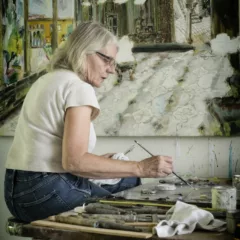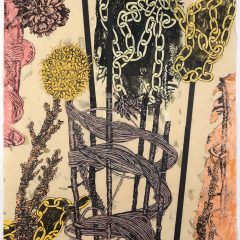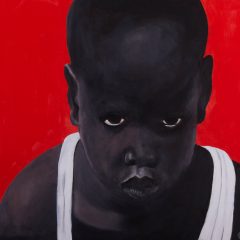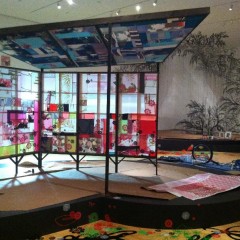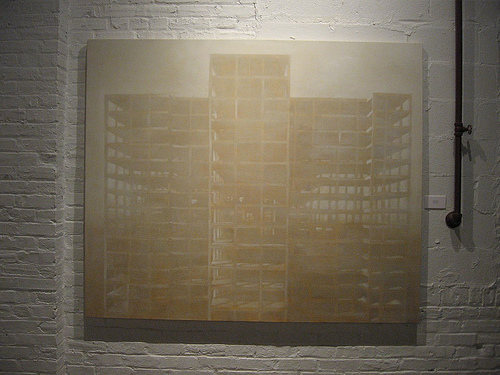
This large, ghostly portrait of a skeletal tower, by Mark Shetabi, has sold.
Tower Gallery, which usually shows really terrific art with an edge at its digs also on the edge–between Northern Liberties and Kensington–is doing something different this month. On its walls hang works from a group of blue chip artists–Joan Wadleigh Curran, Martha Mayer Erlebacher, Randall Exon, Sidney Goodman, Jane Irish, Ben Kamihira, Alex Kanevsky, Susan Moore, Tina Newberry, Scott Noel and Mark Shetabi–who have all won recognition and their place in the Philadelphia figurative tradition.
The big question on everyone’s mind was, how did gallerist Jenny Jaskey get these artists to show at her gallery, which hasn’t yet earned the kind of chops to rate. The answer is, she asked. She said to me that she figured the worst answer she could get was a no. This was the same kind of guts that led her to open a gallery (now anyone who does this has to have some guts) and to put her gallery in Tower Investments developer Bart Blatstein’s urban brut recycled building in the middle of nowhere.
Jaskey’s willingness to approach artists who didn’t really need her has already paid off. She has sold the huge Shetabi painting–and she’s planning a solo show for him in September!
New York alert: Shetabi also has a solo show at Jeff Bailey Gallery in Chelsea opening on April 26.
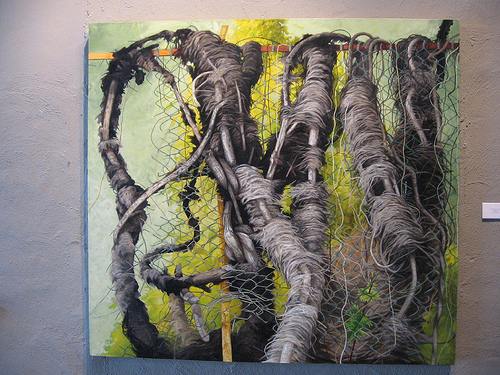
Assisted Living, by Joan Wadleigh Curran, 60 x 64″
The exhibit at Tower, Finding a Form: Influences in Figurative Painting, has some pretty great work in it, and Jaskey hopes the juxtaposition of the more contemporary work with the rest offers a way to reconsider figuration.
While I didn’t come away convinced, I found plenty to love in this show.
Joan Wadleigh Curran’s Assisted Living, while keeping to her subject of the invasive and persistent power of nature, seems more menacing than usual. The plant is threatening to pull down the fence on which it hangs. And all of us who have ever taken care of anyone, be it a baby or a parent, know what this painting is about. [4/18/07: I should have mentioned that Curran has a show up at Seraphin right now.]
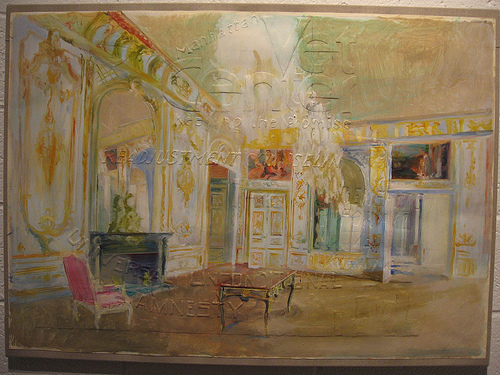
by Jane Irish
And Jane Irish continues to express outrage at the treatment of veterans, this time by painting over with baroque decadence the broken promises barely visible in raised lettering. By returning to architecture as a metaphor, Irish is combining persistent themes in her work, and staying right up to date with the daily news and the government’s disrespect for its soldiers.
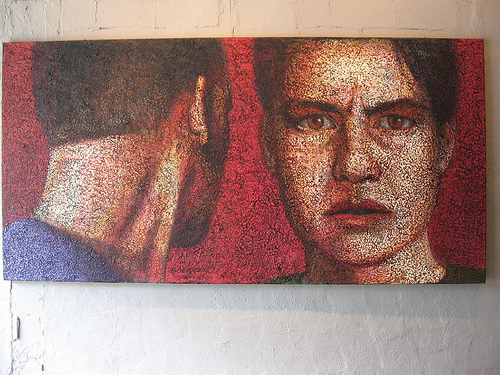
Couple, by Susan Moore, 60 x 20.
Susan Moore’s giant heads are not happy, but they look great, imposing, and full of the crusty surface that gives her work its up-close payback. They also make me think of movie-scale heads and television-scale heads, bringing the portraiture into the visual vocabulary to which we have all become accustomed–and suggested a soap-operatic contretemps as well as some real-life anger. I also get a comic vibe in the stylization.
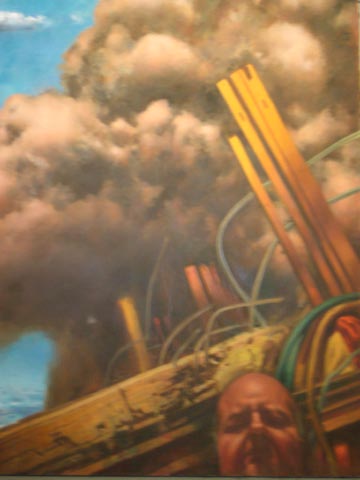
“Smoke,” oil on canvas, 102 x 77 inches, 2001-3.
Although Sidney Goodman created Smoke between 2001 and 2003, it’s not about 9/11 he told Jaskey. But with the beams emerging from the smoke, it’s hard to believe 9/11 was not on Goodman’s mind. The reality of 9/11 and Iraq as apocalyptic disasters rescues the painting from Goodman’s sometimes grandiose impulses. This painting seems less smoke and mirrors and more smoke and mayhem. The bewildered face in the bottom right broadens the subject and lets you read in what you will.
Randall Exon and Tina Newberry I accept in the I yam what I yam category. And against the brick wall of tower, they looked more peculiar, and that’s a good thing.
And Ben Kamihira’s pre-Raphaelite cheesecake in Justine Kurland voyeuristic settings may be worth some serious reconsideration. He’s looking young.
But I came away from the exhibit with my usual reaction to nudes. Mostly they are academic throwbacks to another era. Each nude needs to convince me all over again that it deserves to be made at this place and time. Most of them didn’t do that.


